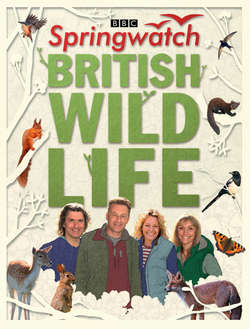Читать книгу Springwatch British Wildlife: Accompanies the BBC 2 TV series - Stephen Moss - Страница 15
ОглавлениеSparrows
©Mike Lane/FLPA
©Jurgen & Christine Sohns/FLPA
The house sparrow and the dunnock are often ignored in favour of more colourful garden birds, but show some fascinating behaviour.
Three birds in Britain share the name ‘sparrow’, two of which are true sparrows: the house and the tree sparrows. The third, the so-called ‘hedge sparrow’, is now more properly known as the dunnock. A member of the accentor family, it is completely unrelated to the seed-eating sparrows. Despite the name change, however, many people still refer to this charming little bird as a hedge sparrow.
Of all the birds that are seen in our gardens, towns and cities, surely the most familiar is the house sparrow. Sparrows have almost certainly lived alongside human beings longer than any other species of wild bird. They have done so from early times for one simple reason: our ancestors grew grain, which the sparrows could steal for food. We soon got our own back: communal nests of house sparrows, in the walls and roofs of our homes, were regularly raided for eggs to supplement a meagre diet.
As they have lived alongside us for so long, we have tended to take house sparrows more or less for granted. Their appearance doesn’t do them any favours. They are the classic ‘little brown job’, though the male, at least, can claim to be a little more handsome than his mate, with his grey and brown cap and smart black bib. Female and juvenile house sparrows really are the archetypal small brown bird, with few distinctive markings, apart from a pale stripe running behind the eye.
In recent years, many of us have taken to giving sparrows a helping hand by putting up communal nest boxes. The house sparrow is a sociable bird, which prefers to nest in colonies, so a box with several entrance holes and chambers is likely to encourage them. And they need this help. In the past few decades, the sparrow has declined faster and more seriously than almost any other garden bird. This is despite the fact that we now feed wild birds much more than previous generations, which should help one so tied to human habitation as the house sparrow.
The reasons for its rapid decline are complex. It is almost certainly down to a combination of factors, each of which may affect different populations of sparrows, and other birds, at different stages of their lives. We know that changes in farming practices – especially the sowing of winter wheat in autumn, which removes the amount of seed left on the land in winter – have affected sparrows as well as finches and buntings, their close relatives.
The ‘yuppification’ of our towns and cities, with loft conversions and the general tidying-up of homes, has undoubtedly reduced the number of places available for sparrows to nest under the eaves of houses. But the biggest problem may be an unseen one. It is thought that the change from leaded to unleaded petrol may have introduced a chemical into the atmosphere of our cities that kills off the small caterpillars on which baby sparrows are fed during the first two or three days of life.
If anything, the house sparrow’s country cousin, the tree sparrow, has fared even worse during the past few decades. Populations as a whole have declined by almost 90 per cent, which means the species has disappeared from many places where it used to thrive. Along with other seed-eating farmland birds, such as the linnet and yellowhammer, it has undoubtedly been hit hard by modern farming methods, which reduce the amount of available food and places for the birds to nest.
If you are lucky enough to find a flock of tree sparrows, they will all appear to be males. That is because the sexes are similar. Both male and female are a shade smaller than the house sparrow, with an all-brown cap, a brighter overall plumage, and a distinct black spot just behind the ear.
The dunnock is superficially similar to a sparrow, but if you take a closer look, you will notice its more horizontal posture, slender bill, and neat, plum-and-chestnut-coloured plumage. Whereas sparrows are usually seen in flocks, the dunnock is a solitary bird, hopping about beneath the bird table and minding its own business. In spring, though, dunnocks are transformed into sexual predators. Both males and females are highly promiscuous, seeking out other partners, despite being paired up with their original mate.
©Roger Tidman/FLPA
The tree sparrow is one of our fastest-declining woodland and farmland birds.
